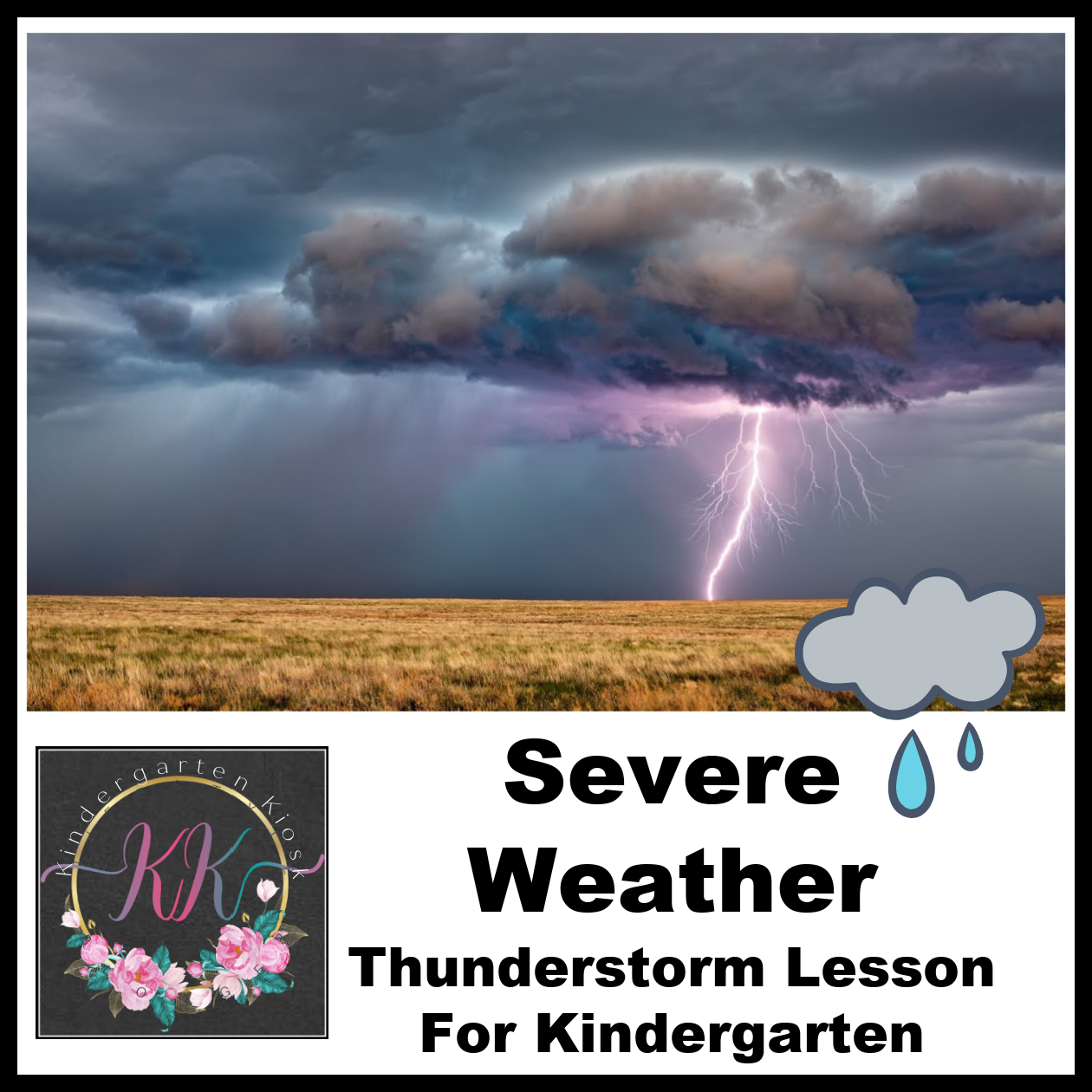Severe Weather Thunderstorms
I love teaching students about weather, as it is such a rich topic with so many concepts to explore. One concept that is fun to teach is thunder and lightening! Below is a lesson to teach about severe weather and help you check off one of your science standards. You will want to top-off your weather instruction with our complete weather unit. It is filled with some great weather themed academic learning!
Learning About Severe Weather: Thunderstorms
Next Generation Science Standard: K-ESS3-2 Ask questions to obtain information about the purpose of weather forecasting to prepare for, respond to, severe weather
Preparation: Before the lesson, create blue ice cubes by freezing colored water in an ice cube tray. *Keep the ice cubes frozen until the experiment. Gather a rectangular plastic shoe-box size container, red food coloring, dropper, container of room temperature water.
——-
Have you ever hear the word thunderstorm? What does it mean? A rainstorm with lightning and thunder.
Peer share: Turn to a friend and take turns telling if you have ever been in a thunderstorm and sharing that experience. Be mindful of students who may have experienced weather that was frightening and adjust accordingly.
Together we can create a model of a thunderstorm.
Experiment Directions:
Fill a clear rectangular container halfway with room temperature water. This water is going to represent the air on a normal day. We are going to introduce cold air into our normal air and watch what happens.
At the same time, drop the blue ice cubes into the water on one end of the container. Add a few drops of red food coloring to the other side of the container.
The cold blue water is sinking to the bottom of the container and the warm red water is being forced to rise to the top. As it happens…When the blue and red water meet they will create the kind of unstable air that can create a thunderstorm.
Who can explain what happened during the experiment.
During a thunderstorm, when lightning strikes, energy is given off that heats the air through which it passes. This heated air quickly expands, producing energetic waves of air, resulting in the sound that we call thunder.
Activity Directions:
Materials To Gather: Polystyrene foam cup for each student, and brown paper lunch (or penny-size is preferred) bag for each student.
Today we will experiment with this concept of lightening and thunder. First, let’s see how the energy that causes lightening can easily be formed. Pass each student a styrofoam cup and ask each to rub the cups quickly on their head for a minute. Can you see what the cup is doing to your classmate’s hair? That energy is positive charged electrons — the same energy that creates lightening!
Now let’s explore the sound that comes during a storm from that energy, called lightening. We will use a bag to experiment how the air expands and compresses so quickly that pressure will cause a bang, and air will escape the bag.
Demonstrate with your own bag. Blow into the paper bag and fill it with air. Twist the open end close and hold it with your hand. Quickly hit the bag with your free hand to create the “Thunder.”
Debrief:
Debrief the lesson by leading the students in a discussion of ways people can stay safe during a thunderstorm. (If you are outside, go inside a house or a car with the windows rolled up, if you can’t go inside stay away from trees, water, and metal, don’t use things that use electricity, stay away from window and doors)
Art:
Ask students to draw a thunderstorm.
What customers are saying…
“This weather unit is so useful. I love all the cute activities which the children find very engaging and interesting. I will certainly recommend this to my colleagues!”
“Calendar activities are a must for my young students. This is a great way to introduce and monitor their ability to understand weather.”


